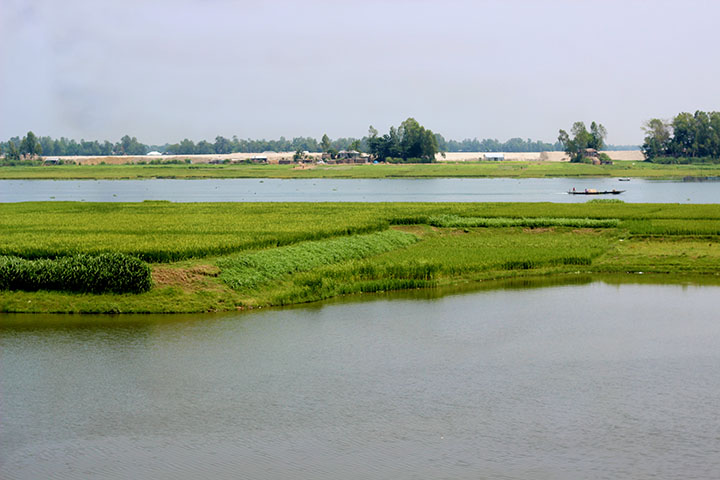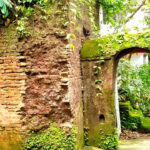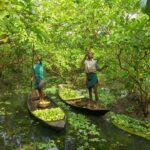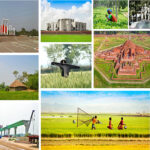Bangladesh has immense potential in the tourism industry, as the natural diversity of this country is unique. As the slogan of this year’s international tourism day (27 September) is Rethinking Tourism, therefore, we have to reflect the moto in our tourism sector in every possible way.
by Faisal Abdullah
Currently, the tourism sector contributes about 11 percent to the world’s GDP. In 2019, the number of tourists in the world was about 1.5 billion. The World Tourism Organization (WTO) projected an additional 4 to 5 percent growth each year thereafter. In 1950 the number of tourists in the world was only 25 million which has increased to about 1435 million in 2019.
The income generated from the tourism sector of Bangladesh is roughly 76.19 million dollars.
According to the estimates of the World Tourism Organization, by 2022, the tourism industry will earn 2 trillion dollars every year. By 2050, tourists from 51 countries will visit Bangladesh, which will contribute 10 percent of the total GDP.
Although accurate data is not available, it is estimated that around 4 crore domestic tourists visit Bangladesh’s tourist destinations every year. As such, Bangladesh also has a huge potential to increase the number of tourists and foreign exchange earnings in the future.
Rethinking Tourism: Bangladesh Perspective
The Covid-19 pandemic reshaped the tourism industry globally and forced many parties to rethink their strategies and business aspects. Bangladesh was not unaffected.
According to the Ministry of Civil Aviation and Tourism, there has been a loss of around 14 thousand crore BDT in the tourism sector of Bangladesh due to the coronavirus pandemic.
According to the information of Bangladesh Tourism Board, 40 lakh manpower related to this sector has become unemployed so far.
To overcome this situation, the government needs special attention. Everything related to tourism has been closed for months.
In the fiscal year 2020-21, in the budget of 5 lakh 68 thousand crores, 3 thousand 688 crores have been allocated for civil aviation and tourism sector. Thus, we are actually trying to thrive in this sector with a flow of the rethinking process.
Tourism in Bangladesh : Regaining travelers’ confidence
If we are keen to reshape this industry to regain the confidence of frequent travelers, we have to put our focus on some particular confidence-building points-
- Infrastructure development of tourism-rich areas.
- Ensuring the safety of tourists, and promoting these safety measures.
- Establishment of tourist police stations in tourist areas.
- Training adequate guides for foreign tourists to provide them a second chance to create job opportunities for themselves.
- Active role of ambassador and high commissioner in promoting tourism of Bangladesh amongst foreigners.
- Establishment of tourism offices in tourist-generating countries 13. Uninterrupted electricity, gas, and telephone system in tourist destinations.
- Construction of a required number of three-star/five-star hotels under a government initiative.
Focus on Short-haul Tourism
Short-haul tourism simply refers to a relatively small distance or domestic tourism, and the potential of re-growing short-haul tourism is evidently expected in Bangladesh.
To align with this year’s tourism day moto, if we are really interested to increase the short-haul visitors, we have to rethink developing our airports and seaports, building entertainment centers for local tourists at various spots, and organizing thematic tourism fairs in accordance with seasonal changes.
Private initiatives should also be welcomed to create variations in opportunities in short-haul tourism. Private businesses can build facilities including tourism centers in beautiful places of uncharted regions.
Tourism in Bangladesh : Long haul travel and B2B promotion
Long-haul tourists are mostly from abroad (specifically from another continent). They can be the major game changer in rethinking tourism. But in a post-pandemic situation, this might take a little while to recover. Thus, B2B promotion can be the real strategy to regain the confidence of inter-continental travelers.
In November last year, the PATA Nepal Chapter, in collaboration with the PATA Bangladesh Chapter, successfully concluded the “Nepal-Bangladesh Tourism Promotion & B2B Exchange” Program.
The exchange program included a familiarization visit to Pokhara for Bangladeshi delegates including a “Tourism Networking and Interaction Session” organized in collaboration with Pokhara Tourism Council and NTB Pokhara in Pokhara.
This sort of B2B promotion can really bring super-optimism in future tourism, as there are certain benefits in B2B in Travel. By B2B travelers can receive the best fares price and free cancellations and quick refunds.
In tourism, B2B can create a win-win situation for two or more stakeholders.
Responsible behavior of tourists and goodwill
If our domestic tourism wants to thrive, some responsibilities also reside in the tourists’ side as well. That will create an atmosphere of responsible tourism, and apparently, it will create an influx in domestic and foreign tourism also.
To become a responsible tourist one has to fulfill some responsibilities which include, but are not limited to-
Supporting local economy: Dining in local restaurants, purchasing locally made souvenirs and gifts while visiting the local markets. Make sure that, your money is being fed back into the community and to the people who are hosting you.
Explore non-popular areas: There is a term ‘over-tourism’. It occurs due to people wanting to see the same sights. When visiting cities there are some stand-out attractions. Try to find out some hidden gems.
Other responsibilities: include, adhering to local dress codes, asking permission before you take someone’s photo, learning local culture, minimizing transport, and using local cheap public buses or trains.
Tourists also must not purchase endangered species and ‘natural souvenirs’ like coral from St. Martin or a piece of the Great Wall of China.
Above all, a responsible tourist must show the utmost respect towards the locality and must not create any disturbance within the inhabitant or natural calmness.

Tourism in Bangladesh : International Marketing
Still, Bangladesh has so much to offer to the world. Especially for the long haul visitors from the other side, Bangladesh can really be a wonderful source of uncharted serenity and rural experience.
We have to take quick action in promoting our gems to different communities before it is too late. We have plenty of promotional content to represent Bangladesh in a whole new dimension. Here are some points which can be taken into consideration-
- Bangladesh This country is also an excellent source of extraordinary matchless beauty in natural diversity. Sundarbans is the largest mangrove forest in the world. The area of the Bangladesh part of the Sundarbans is 6,017 square kilometers. In 1997, UNESCO recognized the Sundarbans as a World Heritage Site.
- We already have the longest sea beach in the world. St. Martin’s Island, Sonargaon, Jaflong, Madhavkund, Hamham, or Jhenaigati in Sherpur, Nakla, or Ghazni can be developed into attractive tourist destinations for foreigners. This industry can be developed by ensuring tourism facilities in Sylhet, Chittagong, and Panchagarh’s tea plantations area as well.
- There are also numerous water bodies (basins and lakes) in this country, which can be among the most tranquil and serene tourist destinations.
- We can showcase our peaceful villages as hosts of a whole new kind of countryside tourism as we have rich cultural antiquity, historical sites and of course, lots of local foods with unrivaled taste!

Tourism in Bangladesh : Awareness Campaign
Tourism is not above accountability. If someone wants to be a tourist, he/she has to know a lot. Therefore, some sort of training or informing session should be involved in the tourism sector. A conscious tourist can be a big source of advertisement. To create such, we have a large-scale campaign.
Here, by awareness, the stakeholders are simultaneously indicating the travelers and the agents. Both parties should be aware of certain rules and opinions. Awareness methods must include the procedures to engage travelers about traveling more responsibly.
A major awareness program could be promoting plastic-free tourism, avoiding wasting natural resources– especially fresh water, re-using towels and properly disposing of waste. choosing responsible operators who are promoting sustainability.
The awareness campaigns can be centered on choosing transportation wisely (i.e. fuel-efficient vehicles).





















